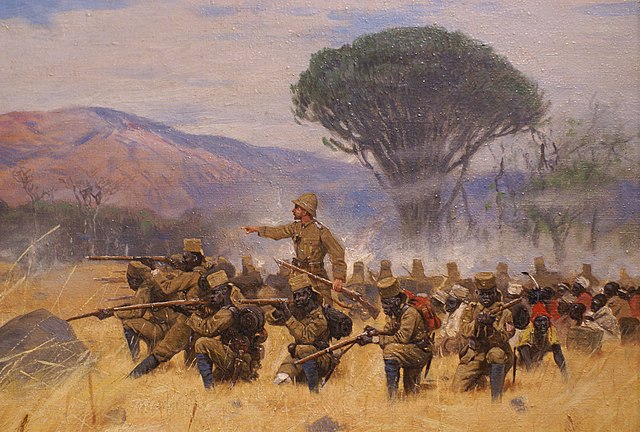The Maji Maji Rebellion, was an armed rebellion of Africans against German colonial rule in German East Africa. The war was triggered by German colonial policies designed to force the indigenous population to grow cotton for export. The war lasted from 1905 to 1907, during which 75,000 to 300,000 died, overwhelmingly from famine. The end of the war was followed by a period of famine, known as the Great Hunger (ukame), caused in large part by the scorched-earth policies used by governor von Götzen to suppress the rebellion. These tactics have been described by scholars as genocidal.
Battle of Mahenge, painting by Friedrich Wilhelm Kuhnert, 1908.
Maji Maji warriors before hanging in February 1906
The Yao people are a major Bantu ethnic and linguistic group living at the southern end of Lake Malawi. They played an important role in the history of Southeast Africa, notably in the 19th century. The Yao are a predominantly Muslim-faith group of about two million, whose homelands encompass the countries of Malawi, the north of Mozambique, and the Ruvuma and Mtwara Regions of Tanzania. The Yao have a strong cultural identity, transcending national borders.
9- to 10-year-old boys of the waYao tribe participating in circumcision and initiation rites (March 2005).
Yao dancing man, 1896
A Yao traditional doctor shows his homemade stethoscope he uses for treatment
A Yao woman brings her child to a well baby check where it receives an injection in a rural village in northern Mozambique






